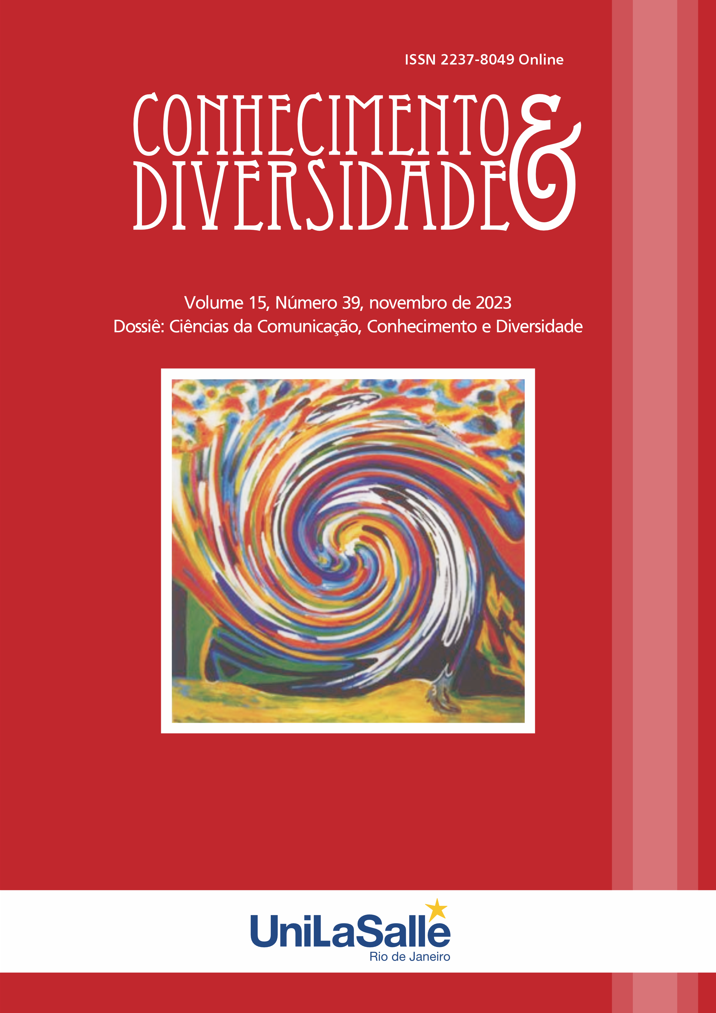THE INNOVATION OF ANDALUSIAN MUSIC TEACHING
DOI:
https://doi.org/10.18316/rcd.v15i39.11164Keywords:
Andalusian music, Pedagogy, Music theory, Music conservatoireAbstract
This presentation will look at the teaching of Andalusian music in Morocco's official music institutions. This music, of Andalusian origin, Moroccan tradition and erudite character, is taught institutionally in all the country's music conservatories, with a defined pedagogical system. However, the teaching of Andalusian music is deficient, as it does not address the multiple aspects of this music, which are essential for an adequate and complete training in Andalusian music. This includes, for example, the field of melodic music theory, the aesthetics of Andalusian music, poetic literature or the history of this music. These elements are totally absent from the teaching of Andalusian music. This presentation aims to provide a description of the state of Andalusian music teaching in Morocco's national music conservatories. Following this description, the presentation proposes a comprehensive pedagogical approach that addresses the different aspects of Andalusian music: a history of Andalusian music, its stages and evolution, taking into account its different elements, many of which have never been addressed in any recognised or unrecognised history, written or oral, such as the part of the history of pre-Andalusian Iberian music or classical Greek music, essential stages in the history of Andalusian music. We will also look at important elements such as modal melodic theory, a theory that disappeared since the fall of Granada in 1492. This theory has been recovered through studies in the field and will be proposed in this presentation as an essential basis for teaching Andalusian music in conservatoires. A pedagogy of Andalusian musical aesthetics will also be proposed due to its importance, since this music has a traditional character and is rooted in its own style, emerging from its social and cultural reality. The practical side will also be covered: all traditional music is only developed in its traditional context, a context that enriches it culturally and provides musicians not only with a suitable environment for this music, but also with cultural elements that guide musical practice.
References
Al-Qādirī Boutchich Ibrahim. (2003). Maḥaṭṭāt fī tārīj al-tasamuḥ bayna al-adiān wa al-šu`ūb bi al-Andalus en AL-ḥaḍāra al-islāmiyya fī al-Andalus wa maḍāhir al-tasāmuḥ. Centro de Estudios al-Andalus y de Diálogo de las Civilizaciones.
Al-Maqarrī Aḥmed. (1942). Azhār al-riyād fī akhbār al-qādī `Ayyād. Matba`at lajnat at-ta´lif wa at-tarjama wa an-nachr.
Al-Sāyeḥ Al-Hassan, Al-ḥadara al-maghribiyya, Manšourat `Oukad, 2010, Maroc, t. 2, p. 91.
AL-TĪFĀŠĪ Aḥmed ben Yūsuf. (2019). Mut`atu al-asmā`i fī `ilmi al-samā`i. (Al-Maŷma` al-tūnusī li al-`ulūmi wa al-ādābi wa al-funūni Bait al-Ḥikma, Túnez).
FARMER Henry Georges. (2005). Dirāsāat fī al-mūsīqā al-šarquiyya. Al-muŷallad al-awwal: al-tarīj wa al-naẓariyya. Al-Majlis al-aala littaqafa. Al hay`a al-amma li shu´un al-matabi` al-amiriyya, Gizeh.
Ben Mays Abdeslam. (2001). «Monāhadat ba`d al-foqahā´ li al-mantiq». in El Bouazzati Bennacer. coordination. Al-`ilm wa al-fikr al-ilmī bi al-gharb al-islamī fī al-`asr al-wasīt (Science et pensée scientifique en Occident Musulman au Moyen Âge). Universite Mohammed V. Publications de la Faculté des Lettres et des Sciences Humaines de Rabat. Série Colloques et séminaires nº 94.
Gutas Dimitri. (1998). Al-Fikr al-yūnāniyyi wa al-ṯaqāafa al-`arabiyya. Nadrasat Dirassat al-Wahda al-Arabiyya, Beirút.
Hurtado Juan & Serna De La J. & González Palencia Ángel. (1943). Historia de la literatura española, Saeta.
Ibn Bassām Abou Al-Ḥassan Alī Al-Šantarīnī. (1988). Al-dakhīra fī maḥāssini ahl al-Jazīra. Dar al-koutoub al-`ilmiyya.
Ibn Khaldoune Abderrahmane. (2001). Al-Mouqaddima. Šarikat Dar al-Arqam Ibn Abi al-Arqam li al-ṭiba`a wa al-našr wa al-tawzi`.
Ibn Sa`īd Ahmed. (1912). KitAb ṭabaqāt al-oumam. Al-Maktaba al-catolikīyya li al-ābā´ al-yasou`iyīn.
Laroui Abdellah. (2007). Moujmal tārīkh al-Maghreb. Al-markaz al-thaqafi al-`arabi.León Juán Africano. (2004). Descripción general del áfrica y de las cosas peregrinas que allí hay. Junta de Andalucía & Consejería de cultura.
Levi Provençal E. (1957). Historia de España. t. IV. España musulmana. 711-1031. direction: Ramón Menéndez Pidal. Espasa-Calpe.
Moreno Alonso Manuel. (2004). Historia de Andalucía. Ediciones ALFAR.
Rubiera Mata María Jesús. (1998). Al-adab al-andaloussī traduction Alī Da`Dour. Al-Majlis al-a`la li al-thaqafa. al-Hay´a al-`amma li šou´oun al-matabi` al-amiriyya.
Seghiyyer Abdelmajid. (2001). «Taqwīm Ibn Khaldoun li al-ḥāla al-`ilmiyya fī al-gharb al-islām» in El Bouazzati Bennacer. coordination. Al-`ilm wa al-fikr al-ilmī bi al-gharb al-islamī fī al-`asr al-wasīt (Science et pensée scientifique en Occident Musulman au Moyen Âge). Universite Mohammed V. Publications de la Faculté des Lettres et des Sciences Humaines de Rabat. Série Colloques et séminaires nº 94.
Simonet Francisco Javier. (1903). Historia de los mozárabes de España. Ediciones Turner.
Yafout Salim. Ibn Ḥazm wa al-fikr al-falsafī bi al-Magrib wa al-Andalus. Dār aṯaqāfa li annašr wa attawzī`.
Zayas De Rodrigo. (2006). Los moriscos y el racismo de estado. Almuzara.
Downloads
Published
Issue
Section
License
Copyright (c) 2023 Amin Chaachoo, Zakaria Charia, Abdelfattah Lahiala

This work is licensed under a Creative Commons Attribution 4.0 International License.
As recommended by the Public Knowledge Project, RCD adopts for its articles a CREATIVE COMMONS Attribution CC BY 4.0 license.
This license allows others to distribute, remix, adapt and build upon your work, even commercially, as long as they credit you for the original creation.
This is the most appropriate license offered.
Recommended for maximum dissemination and use of licensed materials.



